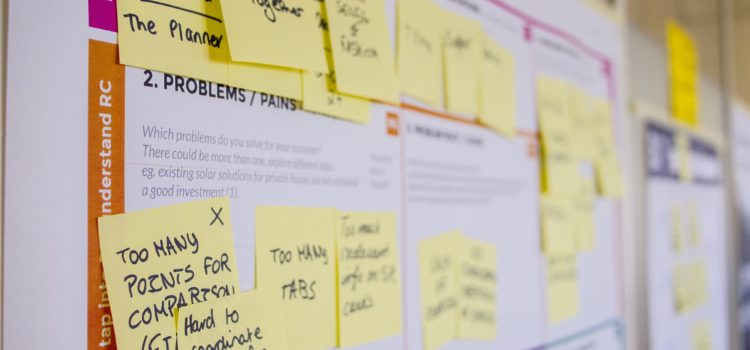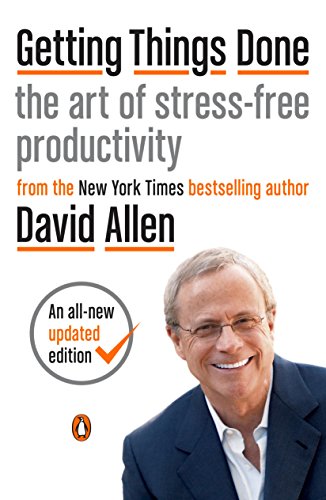

This article is an excerpt from the Shortform summary of "Getting Things Done" by David Allen. Shortform has the world's best summaries of books you should be reading.
Like this article? Sign up for a free trial here .
What is the GTD system, and how does it work? Can it help you have better organizational skills?
The GTD system is a method for organization that focuses on tasks and time management. If you’re looking for a way to organize your life and tasks efficiently, the GTD system is for you.
What does your to-do list look like? Is it a hodgepodge of reminders, information, and projects from all areas of your life? Are you getting anxious just thinking about it?
In this chapter, we’ll talk about why your current system isn’t working and how the Getting Things Done program takes a different approach.
The GTD System: Modern Methods for Modern Demands
Significant changes to daily life in the last half-century have overloaded people with work and personal responsibilities, so people need a more dynamic way of managing it all.
First, most people’s jobs are no longer restricted to the hours of 9 am to 5 pm nor to the confines of the office. These days, people are always on call via phone and email, and the effects of globalization mean you could be working with people nine time zones away. There are no boundaries to your workday, so it easily steals time from other parts of your life.
Second, the nature of work has changed from more industrial, assembly-line type work with clear, visible tasks to so-called knowledge work with much more ambiguously defined projects. Previously, you knew what your task was (for example, assemble these parts) and you knew when it was done. Now, one task can eat up a lot of your time because there’s no clear signal when you’re done.
Third, modern life requires near-constant communication with more people. Most organizations require increasing interdepartmental collaboration, so workers are no longer limited to their specifically defined roles and departments. In your personal life, too, there’s more pressure to stay connected with friends and family via the Internet and social media.
People have no clear boundaries to work and personal commitments, leaving them with little to no free time—or making them feel guilty or pulled in other directions when they do carve out free time.
Established time management tools were developed to organize life the way it used to be.
- Calendars are only effective at organizing a portion of your life.
- To-do lists and prioritizing strategies can’t keep up with the high volume and wide range of tasks most people have.
You need a system that can accommodate today’s faster pace of life and the information that comes from all directions. A modern organization system needs to incorporate minuscule daily tasks as well as big-picture goals, and it needs to be simple enough to save more time and energy than it requires.
Now that you’ve learned the models and the methods, it’s time to start applying the Getting Things Done program to your life.
It’s one thing to know what you should do, and quite another to actually do it, so Part 2 provides some coaching and practical tools for implementing the GTD system. You can implement the full-scale system, or adopt a few aspects and implement more over time.
1. Dedicate Time
Your biggest time investment will be in getting the GTD system up and running. It takes most people two days back-to-back to fully get things started—about a day to capture and another day to clarify and determine next actions.
The initial process takes a lot of mental energy, so aim to dedicate a day or two to it with no distractions. If you work on this after you get home from work at the end of the day, your energy will probably be too tapped to effectively capture and clarify everything without falling down rabbit holes.
Once you have the system set up and in place, you’ll be able to maintain it during much shorter windows of free time in your days.
2. Dedicate Space
The GTD system worked better if you have the right space. Designate a physical location in your home where you can manage your workflow and keep your in-trays and files. Even if your system is mostly digital, it’s almost inevitable that you’ll have some papers to deal with, so you need a place to store and process them.
Your workspace should have:
- A writing surface
- An in-tray
- Space for a computer or other necessary digital devices
You may also want:
- A printer
- File drawers
- Stacking trays
- Reference shelves
- A whiteboard
If you work at an office, create an almost identical setup at work so that you can manage your system wherever you are when things come up. If you share a workspace at home or at work, carve out your own space in order to keep your system organized and effective.
If you travel a lot or work remotely, you may also want a portable office with a briefcase, satchel, or backpack as well as necessary folders and workstation supplies (we’ll get into those in the next section); don’t lose valuable opportunities to be productive when you’re in transit and unprepared.
3. Get the Right Tools
You need a handful of supplies in your workspace to make this system go.
In addition to whatever you choose to use for capturing, organizing, and maintaining your lists (such as planners, notebooks, a computer, tablet, and/or phone), you’ll need:
- Calendar for tracking date-specific actions and reminders (you can keep using whatever calendar you currently use; once you start using the GTD system you’ll get a better sense of whether you need a different type of calendar)
- File folders for organizing projects and general reference materials
- Automatic labeler for file folders
- Paper-holding trays for your in-tray, out-tray, work-in-progress tray, and/or read-and-review tray
- Pen or pencil
- For organizing and filing papers:
- Paper clips
- Rubber bands
- Scotch tape
- Stapler
- Sticky notes
- Plain paper or notepad for capturing and making lists
- Trash or recycling bin to keep your space (and mind) clear of unnecessary items
You may or may not also want to use some kind of organizer, whether it’s a planner, notebook, phone app, or some combination. If you’re already using something and it’s working for you, incorporate it into this system.
The GTD program isn’t rigid; tailor it in a way that will get you to use the system.
Now that you know the principles and the practice of the Getting Things Done program, let’s talk about how implementing this system will change your mental well-being and relationships with others.
GTD System Capturing Liberates Your Mind
In the GTD system, capturing everything you need to do in one system maximizes your mental capacity: When you hold everything in your head, relatively unimportant tasks consume as much mental energy as the important ones, so some items are getting too much attention and others aren’t getting enough. By contrast, when you capture and clarify everything, you can assess how important and urgent something really is and address it appropriately.
The initial capturing process might bring up conflicting feelings: The sheer number of tasks can make you anxious, stressed, frustrated, and guilty. But recording and organizing them will also make you feel relieved and in control.
You’ll know you’ve captured everything when you have nothing left pulling at your attention. At this point you can put all your focus on the task at hand and get into a “zone” with everything you do.
Why Does Capturing Work? It Makes You Trustworthy
When people around you—at work and in your personal life—see that you consistently and promptly act on items and tasks, their trust in you will grow. In simple terms, think about a friend who always cancels or reschedules your lunch dates at the last minute versus a friend who always shows up or gives you ample notice when she can’t make it; who do you trust more, and does that trust extend beyond the ability to show up for lunch?
By the same token, when you reliably follow the system and stay on top of your tasks, projects, and organization, you’ll have more trust in yourself and you’ll become more confident about the way you engage with the world.
Every time you take on a new task, you’re making an agreement with yourself. And every unfinished task on your to-do list feels like a broken agreement; too many unfinished tasks causes you to lose trust in yourself.
Keep your trust and confidence in yourself high with these strategies:
- Don’t make the agreement. Many people have a habit of taking on commitments that aren’t that important to them because they underestimate how much they already have on their plate. The capturing process makes you more consciously aware of your workload, so you can make well-informed decisions about whether or not to make future agreements. Make fewer commitments to reduce your stress.
- Complete the task. To get rid of the nagging feeling you have about a task, just do it. You’ll get it off your list and off your mind, plus you’ll get a psychological boost from the feeling of accomplishment, which will jump-start momentum to complete more tasks. Although it can be overwhelming, seeing everything you’ve captured on a list might actually inspire you to get moving.
- Renegotiate the agreement. As soon as you make an agreement with yourself that you’re going to do something, your brain constantly feels like you should be doing that thing right now—even when you’re not consciously thinking about the task, it’s occupying part of your mental energy and attention. However, if you put the task on your Someday/Maybe list or put a reminder on your calendar, you’ve renegotiated the agreement and your brain can rest at ease knowing that you’ve committed to revisit the thought later.
There’s almost always more to do (or more options of things to do) than can possibly be done, so it’s critical that you learn to filter all the demands on your time by eliminating some agreements and renegotiating others.
The GTD system might seem overwhelming, but you can master it by following the steps and principles. If you do use the GTD system, you’ll become a more efficient and organized person.

———End of Preview———
Like what you just read? Read the rest of the world's best summary of David Allen's "Getting Things Done" at Shortform .
Here's what you'll find in our full Getting Things Done summary :
- Why you're disorganized and your to-do list is a mess
- The simple workflow you can do everyday to be more productive than ever
- How to take complicated projects and simplify them






